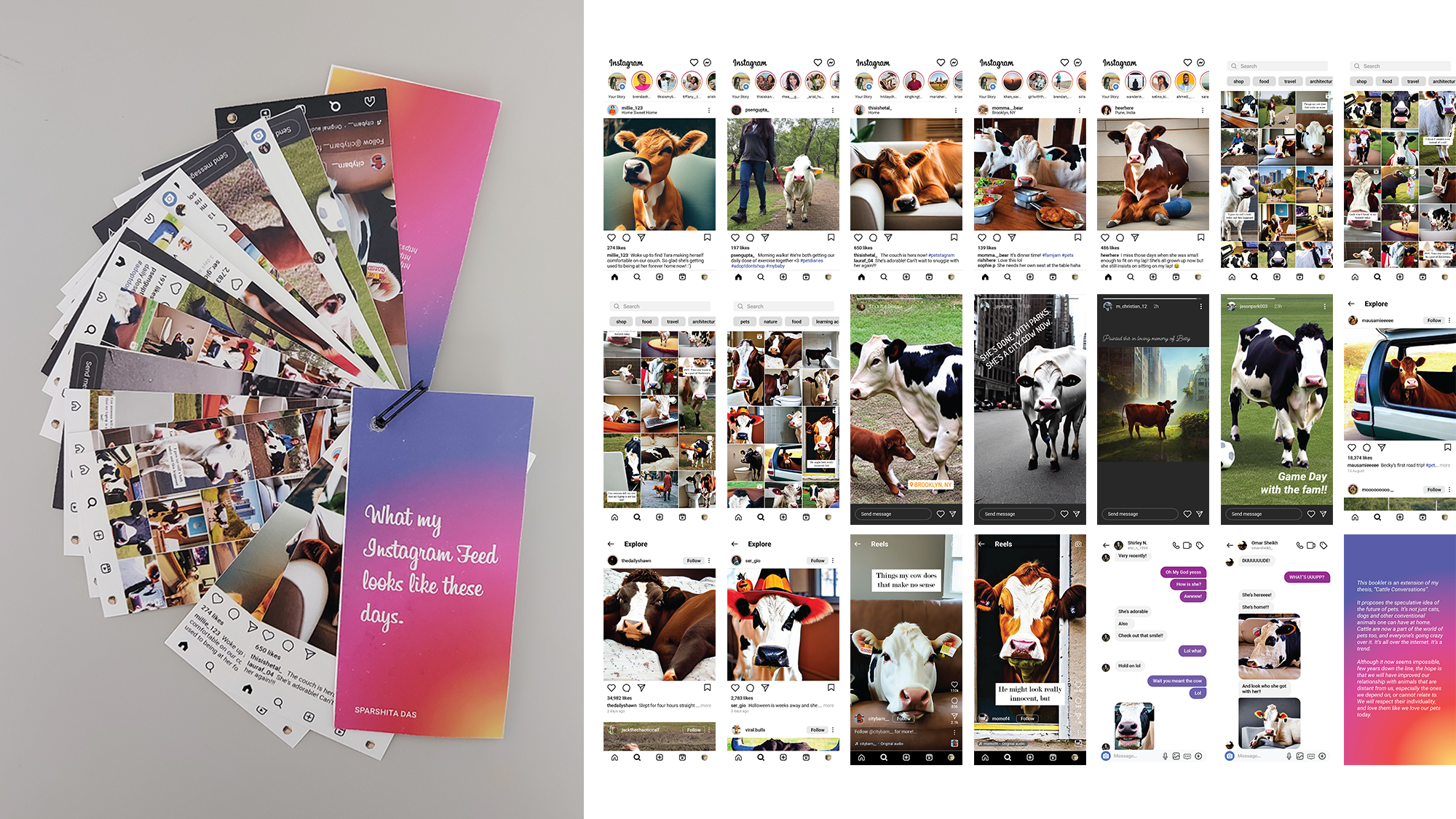Cattle Conversations: Assessing and Reevaluating relationships between Human Beings and Cattle
Sparshita Das
Cattle are one of the most abused animal groups, because of how extensively they are bred, slaughtered and exploited for their products like meat, milk, and skin, and for agriculture too. Their inability to communicate in the same manner as humans render them powerless, especially in a capitalist society. Communication Design, especially through human-centric marketing strategies, has knowingly or unknowingly added to the problem of objectification of Cattle, among other non-humans. It is always difficult to have a conversation about the rights of most animals, especially utilitarian ones — the animals that serve a purpose, besides companionship, to human beings — because they have always been seen more as objects or products, and less as living, breathing beings. On the other hand, there are a number of factors like poverty, accessibility, nutrition, and so on, that most humans are bound to, and restricted by, making them dependent on these animals. One's consumption patterns don’t necessarily dictate their perception of any non-human. This thesis aims to take a different approach to Cattle, and Animal, Welfare— One that focuses on behaviourial aspects of humans and non-humans, and uses Design to open up a conversation about how we can improve our perception, and thus, our relationship with Cattle.
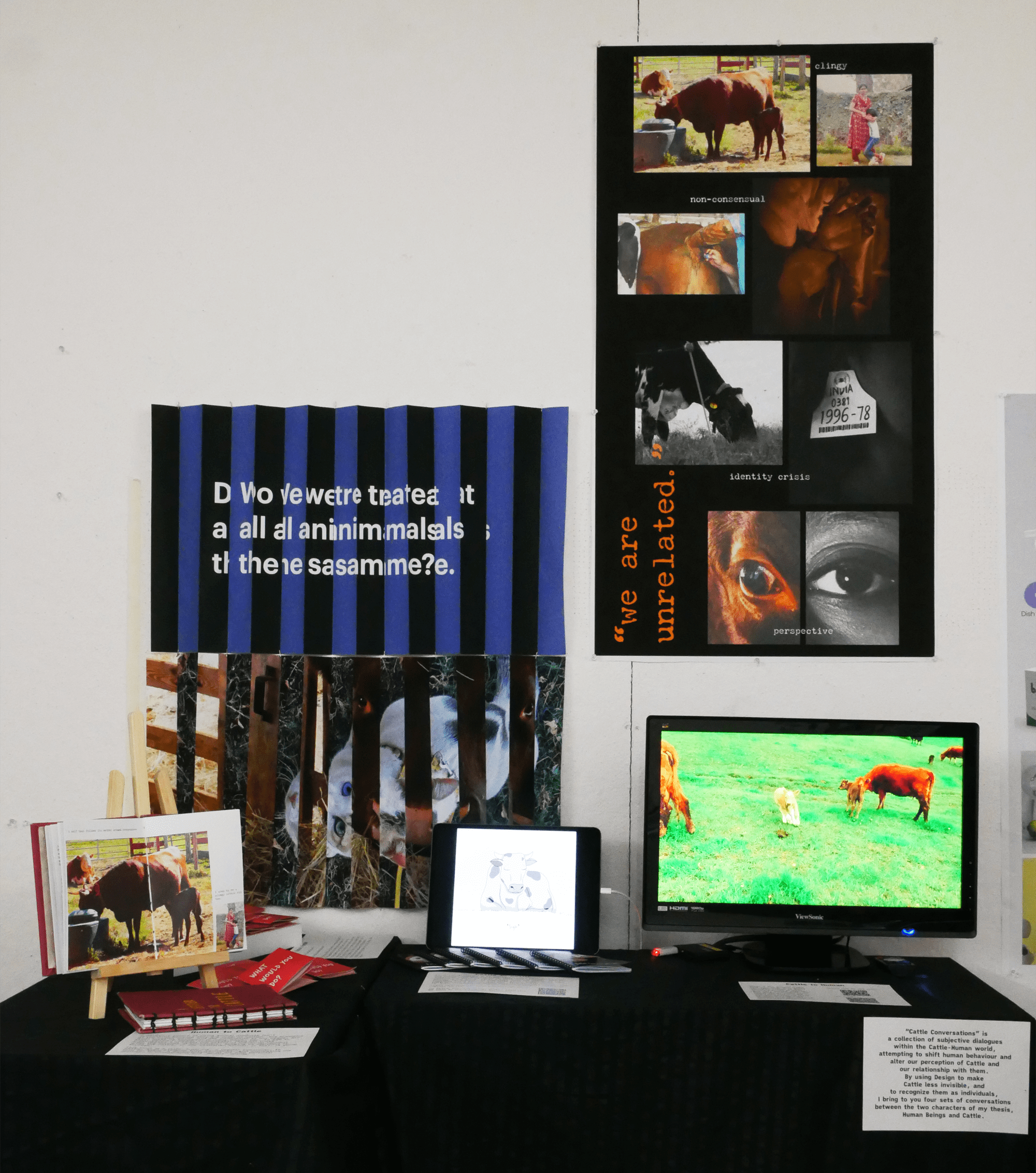
Capstone Overall: Cattle Conversations
My capstone is an attempt to create a blueprint for a new approach to Designing for Animal Welfare, one that talks less about consumption, and more about a perceptive approach. It is a collection of subjective dialogues within the Cattle-Human world: Cattle talking to Humans, about how they want to be treated; Cattle talking to Cattle, about their inevitable fate; Humans talking to Cattle, about their state of being in the middle-ground; and, Humans talking to Humans, about how they would treat different kinds of animals (a kitten vs a cow).Capstone Part 1: Cattle to Human Conversation
What if the animal itself told you what it is going through? Talked to you about how, all it wants, is to be treated with love and care as it serves us and gives us what we need? What if it tries to bring you close to them, see things from their perspective? Will we then be able to treat them as equals, and give them the respect they deserve? Full video here: https://vimeo.com/761863582?embedded=true&source=vimeo_logo&owner=155130108
Capstone Part 2: Cattle to Cattle Conversation
Through Instagram, follow the journey of Tara, a four-year-old cow, and mother of two, expecting her third- who is preparing not just for the birth of her calf, but the inevitable separation after its birth too. While she can acknowledge the reasons for this separation, it is still not an easy process- and she has been through it twice now. (@fetalconversations)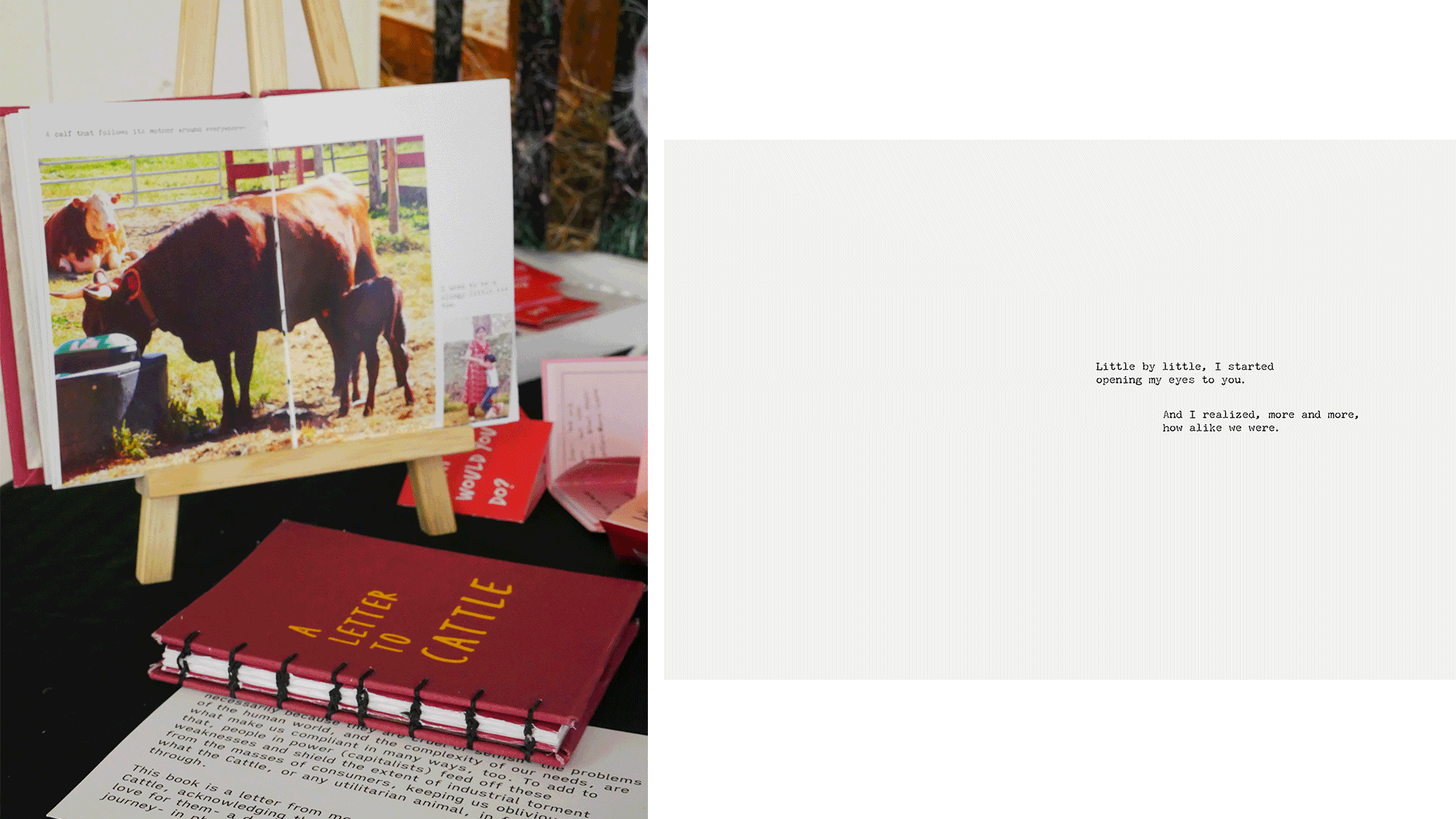
Capstone Part 3: Human to Cattle Conversation
These are selected pages of a book; a letter from me, a regular consumer, to Cattle, acknowledging their sacrifices, and expressing my love for them- a documentation of my own personal journey. Through photographs and words, I tell them how close I feel to them, and how I am able to relate to them- but I’m compliant too.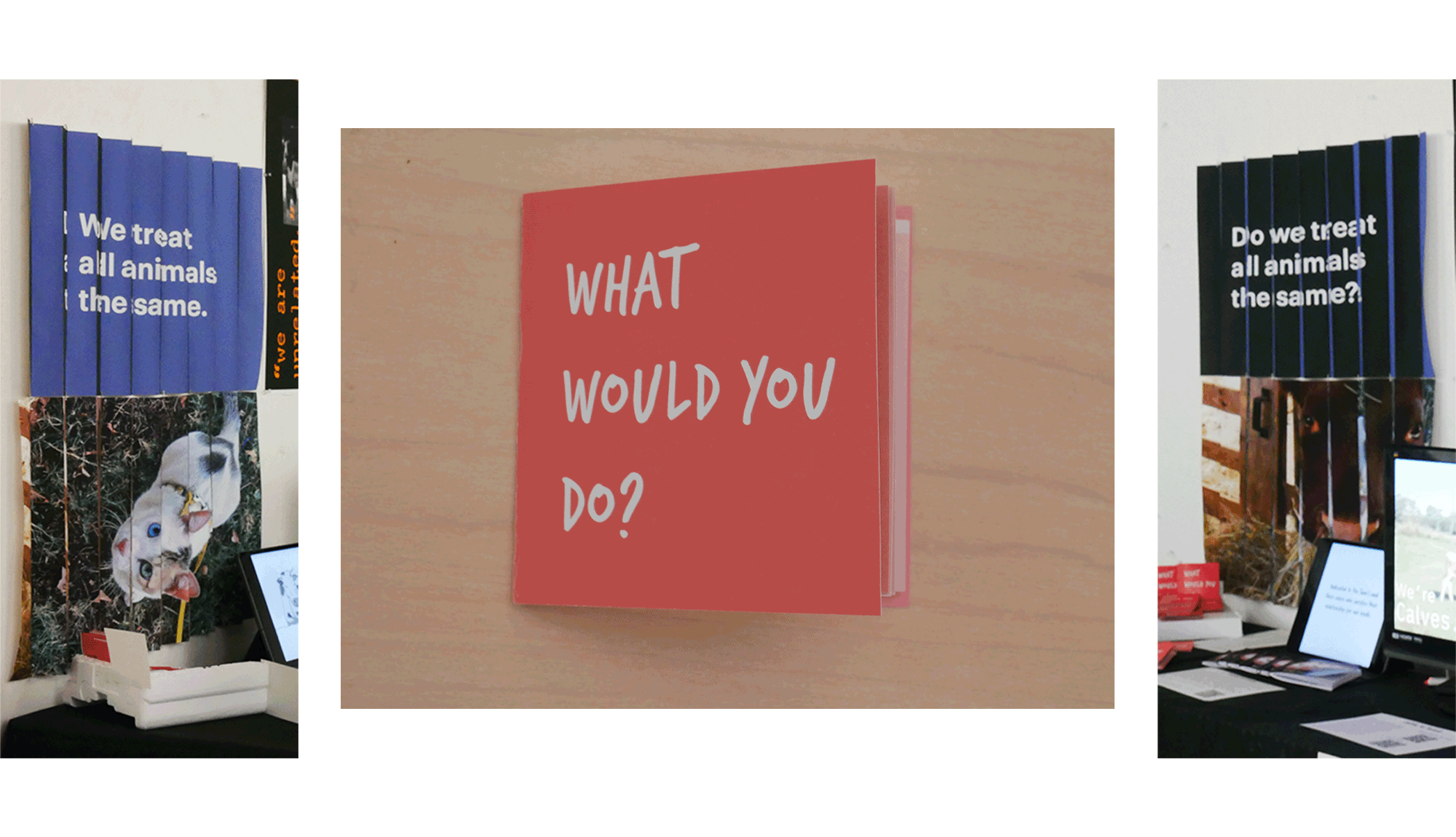
Capstone Part 2: Human to Human Conversation
This cultural probe is an assessment of a subconsciously biased thought process in the human mind, that distinguishes between companion and utilitarian animals. Participants answer a number of questions in two booklets about a kitten and a cow in the same situations. Their answers are represented through the Lenticular posters.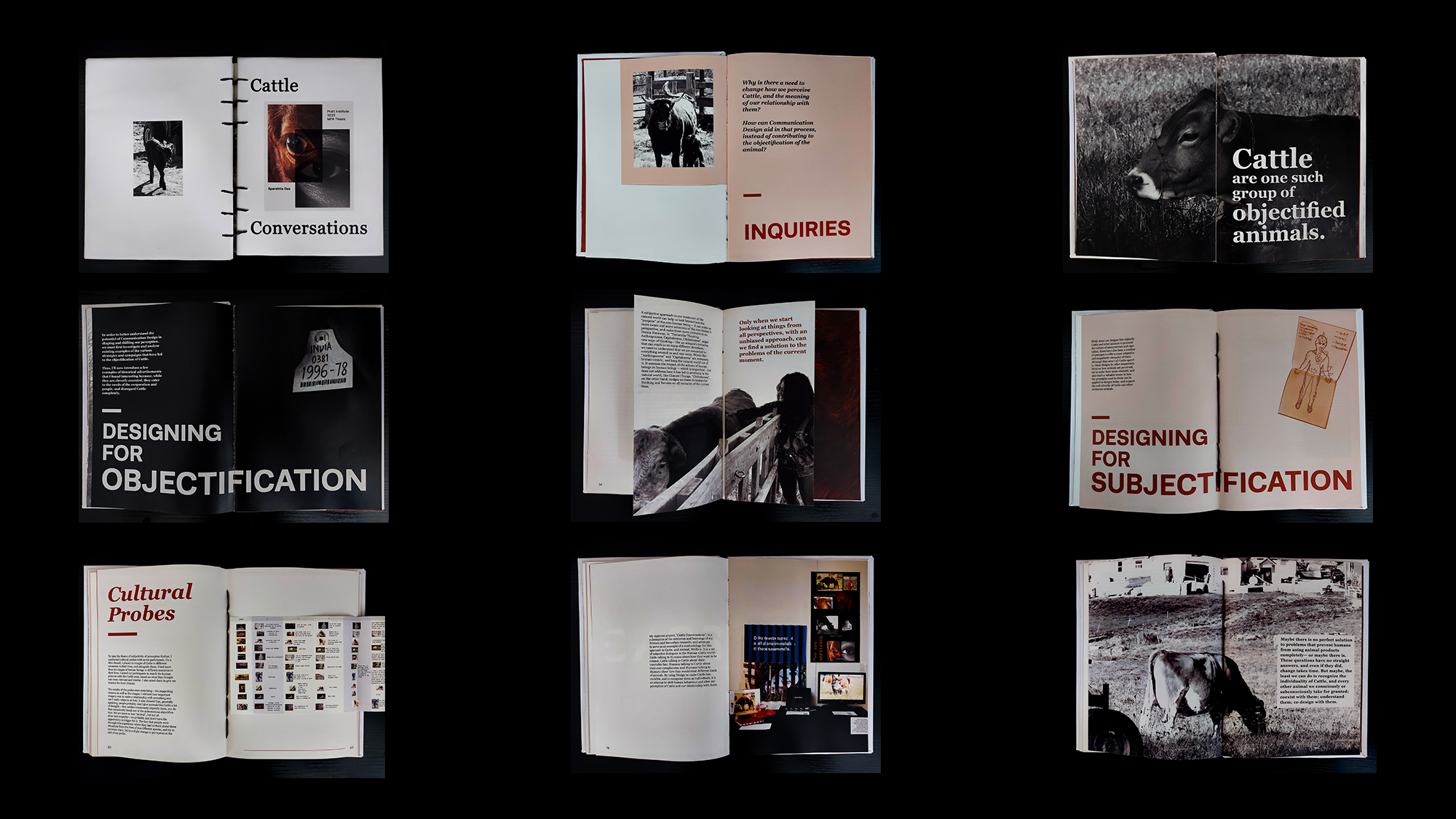
Thesis Book
